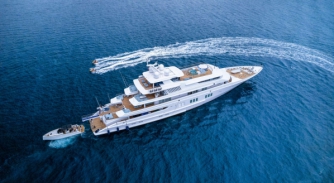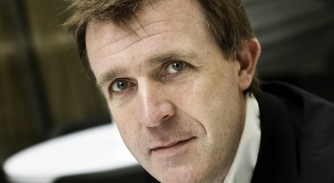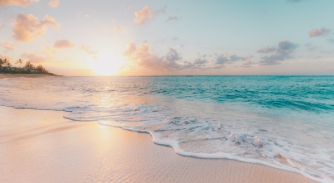A greener future for the superyacht industry
The yacht industry urgently needs a consolidated approach to environmental index tools, says LR’s Engel-Jan de Boer…
The superyacht industry is making positive progress towards finding effective ways to measure a yacht’s environmental impact, but there is an urgent need for these efforts to be consolidated.
A key step towards improving the superyacht industry’s environmental footprint is finding an effective method of measuring it. The International Maritime Organisation (IMO) has implemented various instruments to measure the environmental impact of vessels in the commercial shipping industry – the Energy Efficiency Existing ship Index (EEXI) and Energy Efficiency Design Index (EEDI) relate to energy efficiency at a determined single condition (measured in CO2 emitted by transport work done) and the Carbon Intensity Indicator (CII) relates to the operational carbon intensity observed in a year – but these are not yet applicable to most yachts. Various independent environmental index tools for yachts, however, are being developed in a proactive effort by the industry to take responsibility for reducing its own environmental footprint.
While Lloyd’s Register (LR) has been involved with the development of all the various yacht indices to some extent, and greatly supports the various initiatives, there are concerns that the approach is becoming too fragmented. “We are committed to driving the decarbonisation effort within the yachting sector, including working with alternative fuels, looking at energy consumption and assisting with the development of these environmental indices,” explains Engel-Jan de Boer, LR’s Global Yacht Segment Director. “We believe, however, that the efforts need to be consolidated and the industry needs to agree on one single index.”
The need for a united front has never been pressing. While the IMO hasn’t specifically targeted the superyacht industry with any of its environmental regulations thus far, yachts were mentioned for the first time as one of the ship types in its latest Greenhouse Gas Study – showing that the sector is increasingly on the environmental radar.
“The past has taught us that if we don’t act upon incoming regulations at an early stage, we could have issues,” adds de Boer. “That is exactly what happened with the Maritime Labour Convention (MLC 2006) – the industry acted too late and had difficulty adjusting to unsuitable requirements. We don’t want to make the same mistake with environmental indices.”
The current landscape
One of the first tools developed for the sector was the SEA Index, led by the Yacht Club de Monaco and Credit Suisse. Validated by LR and launched in 2020, the SEA Index aims to enable superyacht owners and guests to easily assess and compare the carbon impact of yachts over 25m and make informed decisions when buying or chartering a vessel. LR is currently issuing CO2 certification on behalf of the SEA Index for the first yachts using the tool.
The first version of the Water Revolution Foundation’s Yacht Environmental Transparency Index (YETI) was launched in November 2022. Its method to assess permanently crewed yachts, with trans-Atlantic capability, above 30 metres on their complete environmental credentials has been co-created by a group of leading shipyards, naval architects and research institutes.
While LR hasn’t been involved in developing the index, de Boer has been responsible for coordinating a joint response from all the prominent classifications societies through a series of roundtable discussions, where it was agreed that the YETI is clearly based on a well-built Life Cycle Assessment model including both upstream (production) and downstream (use, combustion, shore power). A very comprehensive calculation model, which goes beyond the IMO ambitions, was developed to estimate various emissions based on a detailed description of the systems on a yacht and a fixed operation profile.
Blue ESG is another initiative aiming to better the superyacht industry’s impact on the environment. LR supported Blue ESG in developing a Superyacht Carbon Intensity Indicator (SCII) for the assessment of operational emissions against the total annual usage for yachts over 400gt. The SCII provides a standardised metric for comparing the carbon intensity of different superyachts and assessing their operational environmental performance over time.
 Engel-Jan de Boer, LR Global Yacht Segment Director
Engel-Jan de Boer, LR Global Yacht Segment Director
As part of LR’s Ship Performance Group, Santiago Suarez de la Fuente can offer a bird’s eye view of all the indices. “The SEA Index and YETI are currently focusing on the carbon intensity of yachts at a given and fixed operational profile, which is closer to the IMO’s EEXI,” he explains. “YETI is more complex and expansive in its scope, encompassing many different onboard elements, and operating conditions, and requiring a lot more data. Blue ESG’s index, however, covers the carbon intensity of the yacht for each year of operation, which is comparable to the IMO’s CII.”
LR has also been working with Italian builder Azimut Benetti to develop a carbon emissions design index for yachts under 24m in length, with an approach consistent with the IMO’s EEDI. This index has been launched at the recent Cannes Yacht Festival where Azimut handed over the calculation method supporting the index to SEA Index for their use, reaffirming their commitment towards a greener yachting industry.
The next steps
From the meetings between various other class societies and LR to discuss the development of YETI, there is agreement that the best way forward is to establish one index as an ISO or IMO standard for the measurement of the CO2 footprint. After such recommendations, a proposal was recently submitted by the Water Revolution Foundation to the ISO working group for environment and sustainability under ISO/TC 8/SC 12 Large Yachts, to set a clear operation profile for yachts which could form the basis of a future international index.
The incoming chair of the ISO/TC 8/SC 1, Ben Geary, has expressed his support of the initiative: “I applaud the various efforts in the yacht industry to reduce the environmental footprint,” he comments. “It emphasises the need for a common standard against which we measure the energy and carbon footprint of yachts. Not dissimilar to what is happening on other ship types as directed through the IMO. I am looking forward to working with all parties for a rapid introduction of such a standard and helping industry progress.”
Over the course of what is likely to be a multi-year process, the industry will be able to provide feedback on the development of an international standard and, if approved, will create a single and transparent way of understanding a yacht’s environmental credentials. This can then be used as a basis for class environmental notations.
“Of course, there's going to be disagreements and debates depending on what each party wants, but sitting everybody at the table is a good step forward towards having a standardised index,” says Suarez de la Fuente. “There will have to be compromises, but that’s the nature of creating a standard that covers the whole industry.”
The end goal would then be to have a standard submitted to the IMO as an example of how the yachting industry should address the issue of carbon intensity and energy indices “If we don’t, the IMO will start imposing its own version on the industry itself, which could likely result in an unrealistic and inappropriate tool,” cautions de Boer. “It’s very positive to see the various initiatives developed in a relatively short amount of time, but there’s an urgent need for a consolidated effort by the industry.”
In conclusion
Talk of sustainability in the superyacht industry can often feel like ‘greenwashing’, and the same could be said for environmental indices. But Suarez de la Fuente is optimistic about the progress made so far. “Our clients are the first movers, taking advantage of the gap in the market and establishing a foothold in the industry’s transition towards decarbonisation – they are taking on a lot of risks to do so,” he asserts.
As such, LR will continue to support all the indices while working towards a single standard that the whole industry can focus on. “They are all good initiatives that will succeed when working towards a single strategy for a cleaner ocean and better environmental footprint,” de Boer reiterates.
By building on the progress made so far, it is possible for the industry to establish a standardised index that will not only enable yacht owners to measure the environmental impact of their yacht but also allow them to make informed choices over different sustainable technologies when building or refitting a project. While there is work to be done to improve unity, this period presents an exciting opportunity for the yachting industry to demonstrate its ability to take responsibility for reducing its own environmental footprint.
Profile links
NEW: Sign up for SuperyachtNewsweek!
Get the latest weekly news, in-depth reports, intelligence, and strategic insights, delivered directly from The Superyacht Group's editors and market analysts.
Stay at the forefront of the superyacht industry with SuperyachtNewsweek
Click here to become part of The Superyacht Group community, and join us in our mission to make this industry accessible to all, and prosperous for the long-term. We are offering access to the superyacht industry’s most comprehensive and longstanding archive of business-critical information, as well as a comprehensive, real-time superyacht fleet database, for just £10 per month, because we are One Industry with One Mission. Sign up here.
Related news

SEA Index launches Phase III
The new segment expands the scope of the carbon-emission calculation tool to include yachts below 400GT and above 25m in length
Crew

“Let’s all get behind a new designers’ protocol”
Dickie Bannenberg calls for a standardised industry document that contains guiding sustainability principles for every yacht designer
Owner

“If we don’t embrace change, we’ll disappear. It’s that simple.”
Dr Vienna Eleuteri says the superyacht industry must seize the ‘fantastic opportunity’ to become involved with climate contribution programmes
Business
Related news
SEA Index launches Phase III
2 years ago
“Let’s all get behind a new designers’ protocol”
2 years ago
NEW: Sign up for
SuperyachtNewsweek!
Get the latest weekly news, in-depth reports, intelligence, and strategic insights, delivered directly from The Superyacht Group's editors and market analysts.
Stay at the forefront of the superyacht industry with SuperyachtNewsweek



